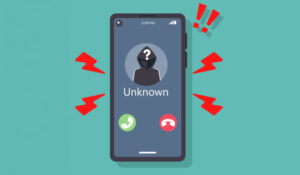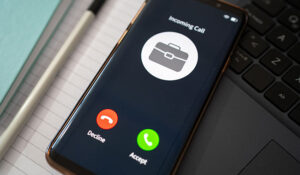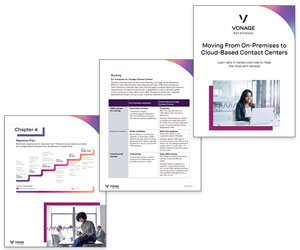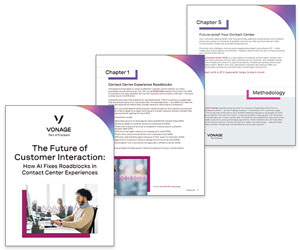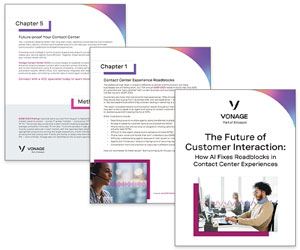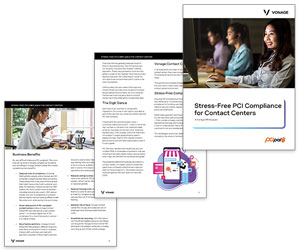Traditionally all callers have been assumed to be the same. However, an exciting technology development, called ‘Individual Caller Treatment’ is starting to customise call routing to the individual customer.
Richard Pickering shows us how.
All too often call centres gain a poor reputation by herding each and every one of their callers through the same process, irrespective of the caller’s needs or call history.
This represents a lost opportunity – not only to improve the caller experience – but also to increase the chances of resolving calls the first time.
Imagine being able to route high-spending callers to specialised teams of sales people that are highly trained closers.
Or routing people to the same agent whenever possible in order to develop a closer relationship with the caller. These are just a couple of examples of ‘Individual Caller Treatment’
Here are ten examples of how Individual Caller Treatment can be used.
‘My Agent’ Routing
One of our clients in the travel industry routes callers back to the same agent every time.
They tell us that their ‘Concierge Service’ builds a stronger relationship with their customers, and they have gained 24 per cent additional sales revenues in return. A screen pop informs the agent of the caller’s latest conversations, so no memory effort is required!
Customer Recovery
If you know that a caller was held a long time in the queue, seemed unhappy when the call eventually got through, or completed a post-call questionnaire that ranked the service poorly, why not flag them for a higher queuing priority the next time they call?
Assuming, of course, that they do call back. It only takes a tick in the box in the screen pop, but may help to recover the situation.
Caller-Centric Routing
If you can rank the importance of your caller to your organisation you can easily set up systems to treat different groups in different ways.
This does require some form of linking to a CRM database, but for applications for smaller operations with up to 50,000 callers all that is required is a spreadsheet of numbers and pre-programmed actions that need to occur if that number calls in.
For example, callers previously flagged as VIPs can be detected and bounced higher in the queue, or routed to specialised agents trained in handling their needs.
A more advanced routine, which admittedly involves sophisticated back-office integration, examines recent loyalty card spending patterns and assigns a rank that is effectively determined ‘on-the-fly’ before the call is placed.
Life Cycle Routing
If you can identify the purchasing life cycle of your customers you can also handle your callers accordingly.
Unknown callers are probably in the prospect stage and can be handled by junior staff; the next call should be routed to agents skilled in closing, while callers with a recent purchase will probably need the help desk…
Towards the end of the life cycle, callers that are falling behind in payments will only get through to accounts, and ‘at-risk’ customers, those approaching the end of an annual contract, routed to agents trained in account recovery.
Geographic Routing
This is the entry level for most contact centres that have deployed Computer Telephony Integration (CTI). The callers CLID is used to determine where in the country the call is coming from and to route the caller to the nearest point of contact…so a call from Scotland would be routed to a Scottish call centre.
All that is required is a simple process that relates the first five digits in the CLID to an agent group; it does not require any CRM integration.
More sophisticated routines can use the GPS information on 3G mobile phones to do the same thing, for example, routing the caller to the nearest pizza parlour.
While not entirely foolproof, these routines don’t cost much to set up and make a start in treating the caller as an individual.
Value-Based Routing
As the saying goes, “Not all callers are the same, and not all agents are the same”. By routing key callers to your best closing agents you can ensure a higher close rate on your high-value customers.
By routing priority callers (those with a purchase history) to good agents when the centre is very busy and sending new (i.e. unqualified) callers to the less experienced agents, you will minimise the loss of business due to abandoned calls at the high end of your callers.
Profile Matching
If you know that a caller is a possible target for Product B then make sure that the caller is routed to an agent specialised in selling that product.
For example, a cruise company having sold a package should consider selling insurance, dockside parking, excursions, etc. if the caller comes back before the holiday begins. After the holiday the caller would be routed to the agent that took the first booking to develop the relationship further.
If you know that the caller would feel more comfortable talking to a female agent for cultural reasons, then route the call to a woman.
If the caller is elderly then route to somebody of a similar age or background, or at with least a clear speaking voice. It’s all about playing the odds because very often there is a choice of available agents.
Targeted Messaging
If you have identified specific caller groups you can play targeted messages to them if they are held in-queue to up-sell or cross-sell specific products or services.
For example, travel companies can advertise insurance to callers they know have not yet purchased a package.
However, once the caller has bought insurance another message can be played. In one pilot programme, we showed that targeted messaging boosted revenues by 6 per cent, once again for very little outlay.
Security
A rather neglected aspect of ICT is that callers that are flagged as troublesome in any way can be treated differently too. You could start call recordings and route the call to specialised account managers.
‘My IVR Menus’
Finally, there’s nothing more frustrating than having to wade through the same seven levels of IVR and/or listen to the same music while on hold.
It’s really easy to set up a personalised IVR that eliminates, say, all but two questions and plays a caller-defined choice of music.
Implementing individual caller treatment does not have to be a huge task or be only affordable by the largest contact centres.
The smallest contact centre I know of started with just eight agents and they self-managed the system themselves almost on a daily basis.
However, the impact it had on the caller experience was used as a marketing tool and the company recently won a concession from a major travel company.
Contributed by: Richard Pickering, Chief Architect at NewVoiceMedia
For more on call routing strategies, read these articles next:
- The Importance of a Good Call Routing Strategy
- 10 Call Routing Strategies That Actually Work
- A Guide to Call Routing in the Contact Centre
Author: Richard Pickering
Reviewed by: Hannah Swankie
Published On: 15th Jul 2009 - Last modified: 8th Sep 2025
Read more about - Technology, Vonage








